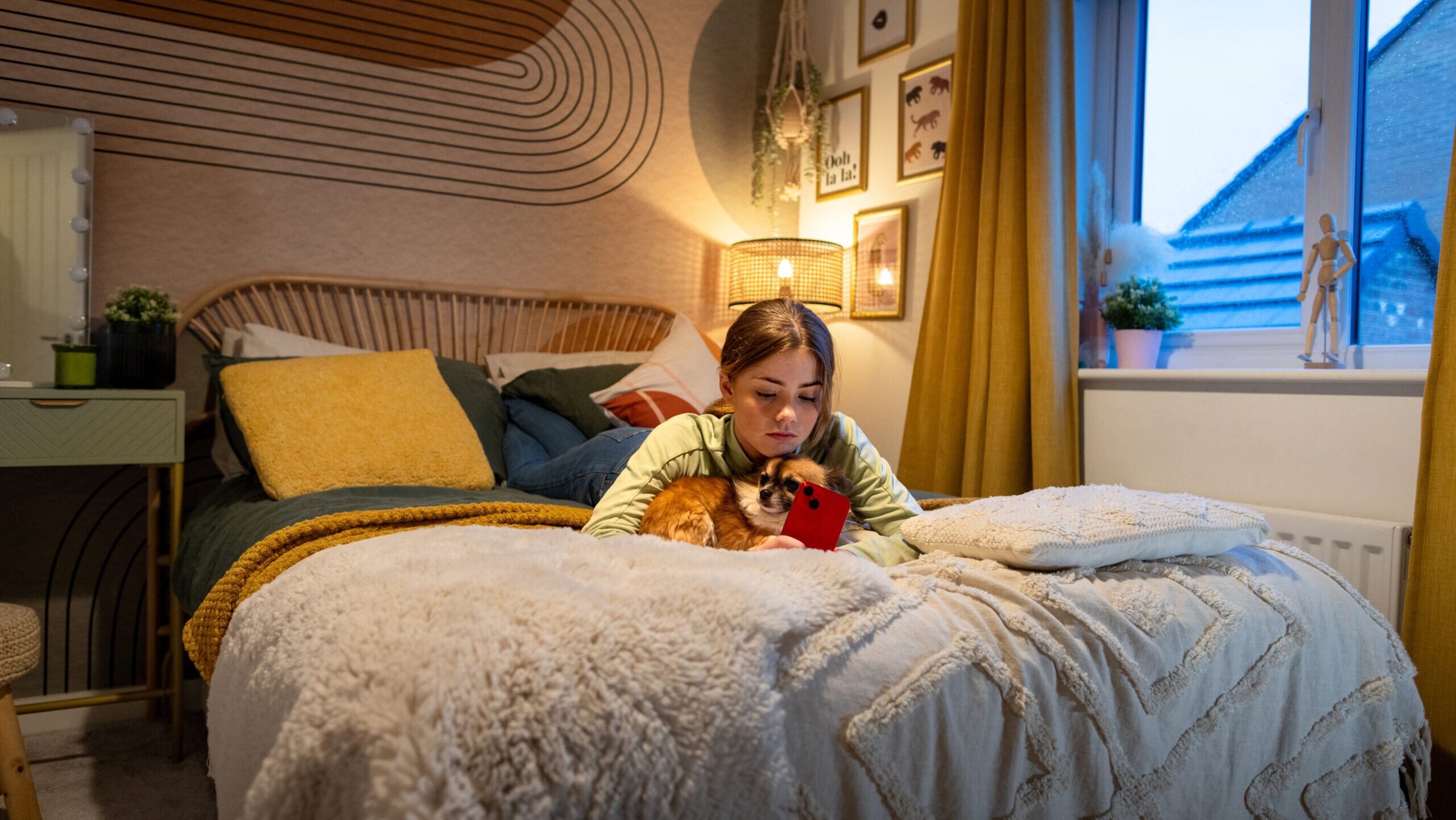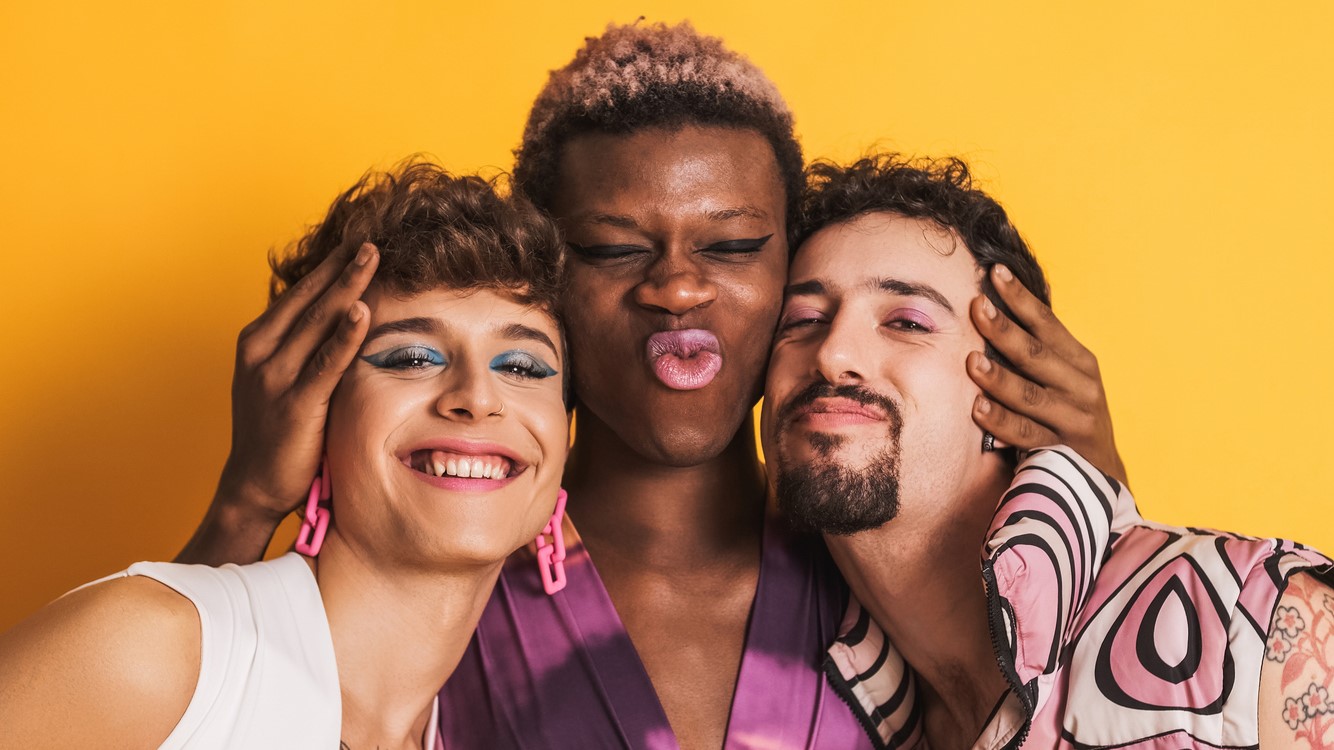According to a Standford Medicine study, today’s kids get their first phone between the ages of 10 and 12. While their first phone may not be a smartphone, the transitions happen quickly.
Then, comes the unsolicited “dick pics”.
“Send Nudes? Teens’ Perspectives of Education Around Sexting, An Argument for a Balanced Approach” by Researchers Giselle Natassia Woodley and Carmen Jacques, along with Dr. Lelia Green, explores Australian teenagers’ opinions surrounding the sex education they should get about sexting and digital intimacy.
We push fear and risks, without considering the role of sexting in modern relationships.
“It’s not really about what’s sent but about understanding why it’s sent.” (G. Woodley, et al.)
Sexting & Relationships
Sexting is the act of sending sexual content – images, videos, and messages – through a digital device. It’s become a regular part of modern romantic relationships, even among teenagers. Despite this, adults still see sexting as a threat to adolescent innocence. Many adults believe it leads to cyberbullying and image-based abuse, causing panic among parents, schools, and communities. However, the researchers argue that sexting should be seen as a legitimate part of today’s dating scene – helping teens develop open-minded and respectful communication about their sexuality.

Sex is Changing
Back in the day, U.S. President Bill Clinton famously declared that sex only happens when “a penis enters a vagina.” This idea is outdated. Teens (and society) have moved beyond this narrow POV, embracing a broader, more complex understanding of sexual activities.
Today, this includes the “consensual giving and receiving of pleasure through multi-sensorial and sexual means,” including the sharing of our intimate moments through screens.
This shift in sex thinking should accept that many teens may sext before they even experience their first kiss or start a relationship – it’s a new era of intimacy.
The Smartphone Generation
The ‘Smartphone Generation’: Anyone born between 1997 and 2012.
Teenagers have smartphones and they are using them to explore their sexual identities – including sexting. However, this erotic communication raises both moral and legal questions.
This often results in a “messy patchwork of legal responses” that may punish teenagers more than protect them.
The Law vs. Teen Expression
The legality surrounding sexting is complicated and controversial. In places like Australia, teens can legally consent to sex over the age of 16, but sexting is illegal until they are 18. This creates a situation where the law fails to reflect real life, potentially denying teens their rights. The authors point out this contradiction results in laws that punish the people they are meant to protect.
Revenge Porn
While sexting can be a great addition to intimacy, it has a dark side too. “Revenge porn” is where a person shares private messages without consent, often to harm an ex-partner. This type of behavior falls under Image-Based Sexual Harassment and Abuse and Technology-Facilitated Sexual Violence.
G. Woodley wants us to swipe right on education that empowers rather than frightens.

The Australian Study
The authors used data from the Australian Research Council’s Discovery Project titled “Adolescent perceptions of harm from accessing online sexual content.” It focused on understanding what teens thought about online sexual content.
At first, it examined experiences with online pornography, then shifted to include conversations on sexting – since it kept coming up among the teens. They used a multi-layered social constructionism framework to understand how individuals create meaning through interactions and social experiences. This helps them explore how teens develop their understanding of sexting through influences like family, media, and personal experiences.
Who’s in the Study?
They recruited teens aged 11 to 17 via social media and community groups. With parents’ permission, they communicated with teens through platforms like Twitter and Facebook and local groups involving parents and adolescents. Once they had a core group of participants, the researchers relied on the “snowballing” method, where teens would recommend others to join the study.
The final participant pool included 30 teenagers, aged 11 to 17, from Perth, Australia – 15 male-identifying, 13 female-identifying, and 2 non-binary individuals. They came from various schools, including private, public, and Catholic. Participants had a range of ethnic backgrounds, such as Aboriginal, Torres Strait Islander, Vietnamese, and Japanese.
Talking to Teens
G. Woodley and colleagues conducted 49 interviews in total – 19 teenagers returned for a follow-up interview a year later.
The interviews were semi-structured, allowing the teens to steer the conversation toward topics they wanted to discuss, like sexting. These conversations often took place in the teenagers’ homes and lasted between 30 minutes and 2 hours, giving them a chance to share their experiences with sexuality, sexting, and sex education.
At first, they did not ask direct questions about sexting, but as it kept coming up, follow-up interviews included questions specifically about this topic.
Questions included:
- Have you accessed sexual content/adult content/porn?
- How old were you when you first accessed sexual content?
- What are your thoughts on sending nudes?
- Have you been taught about sexting and online safety?
What Teens Really Think
The teenagers are dissatisfied with their current sex education, especially regarding sexting.
Many felt the education they received was more fear-based rather than giving useful guidance. Max, a 12-year-old non-binary participant, described it as “just basically saying ‘don’t send them’.” Instead of addressing real-life scenarios, schools often use scare tactics and outdated videos. Nicola, a 15-year-old, shared her experience at a school assembly where a poorly made video was shown, leading to her comment, “I actually don’t know if the talk really did anything.” The teenagers felt this sex ed approach was unhelpful and disconnected from their actual lives.
Sexting Expectations
While sexting could get them into a legal bind, many teens thought it was acceptable within consensual relationships. Rebecca, 13, said, “If they consent, it’s fine.” Trust between the couple was a significant factor, as Warren, 17, explained, “If it’s a relationship I trust her to keep it.” Teens felt that sexting could be good in a healthy relationship if both people agreed and respected each other’s privacy. They saw it as part of their intimacy and wanted educational messages to reflect this.
Unwanted Sexual Content & Abuse
Many participants encountered unwanted sexual content online, which often came as a shock. Lauren, age 13, shared her frustration: “You should be prepared before you see any of it.”
It was discovered that most of the teens received their first unsolicited sext message between the ages of 10 and 13, which often left them with feelings of distress and shock. For instance, Seraphina, age 13, found her first experience of unwanted sexting to be “traumatizing” but admitted, “Now it’s alright because it’s just like normal.” Another 13-year-old, Ruby, shared “If I was older, I don’t think it would be shocking.”
Additionally, consent was a critical issue. The teens felt that sharing images without consent was disrespectful and harmful, yet it was common among their peers.

Supporting Teenagers
Teens, like Caris, age 15, often hear just one message: “Sexting is bad.” However, this won’t stop them from doing it.
The study pushes educators and policymakers to shift toward a more sex-positive approach. Recognizing sexting as part of teens’ sexual exploration allows educators and parents to provide guidance that balances the risks with the benefits – mutual respect, consent, and safety in digital and online sexual activities.
Teens want an education that accepts their reality, respects their autonomy, and prepares them for navigating the negatives. The researchers recommend early, honest conversations about sexting and digital intimacy.
“They [teens] want safe, positive, real-life informed conversations around sex, sexuality, and sexting.” (G. Woodley, et al.)
Sext-Ed 101
Much like smartphones, sexting is not going away – so it’s time to have “the sext talk”.
Start Early
Parents can start these conversations early, ideally before their child even gets their first phone. Talk about sexting – what it is, why it’s a big deal, and how consent is essential. The authors want parents to have early, age-appropriate discussions to help kids understand and respect boundaries before becoming teens.
Be Open
Help kids understand their digital bodies deserve the same respect as their real ones. Teach them to treat every image they send and receive as private. Emphasize that once it’s shared, they no longer control the image. Encourage open conversations about digital intimacy – focusing on the importance of boundaries, loyalty, and mutual respect in relationships.
Don’t Freak Out
Teens are going to experiment. Parents should not panic but provide a safe space for teens to confide in them. If they trust their parents enough to share their experiences or concerns, they’re more likely to seek guidance when things go wrong. A compassionate ear will beat a judgmental lecture. Instead of forbidding the sexting, help them navigate it safely.
“Dick pics” are a reality – unwanted “dick pics” don’t have to be. It’s time to shift your sext talk from ‘sexting is bad’ to ‘sexting can be safe and consensual.’




